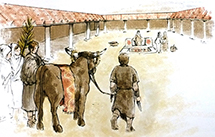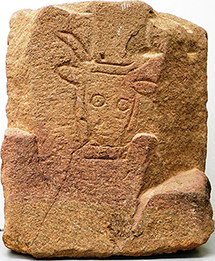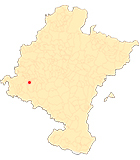The Roman villa of Arellano
Taurobolio
Within the extensive group of buildings of the Roman villa of Arellano, a taurobolio was discovered, a term that designates the ritual sacrifice of a bull to obtain a baptism of blood. It is an Eastern internship , imported to Rome by the worshippers of the goddess Cybele, to whom the sacrifice of the bull was dedicated. The ceremony had an established rite in which the person who was to receive the baptism of blood entered a pit covered with a perforated floor, then the bull was led over the floor and sacrificed by plunging a long knife into its chest. The blood that it spilled flowed into the pit, covering the worshipper below, and then the personage would emerge from the pit and present himself as a new being.
This sacrifice was preceded by a procession with music, followed by the worshippers of the goddess Cybele, with those destined to take part in the taurobolio in first place. These curious practices must have survived in the town of Arellano until the 5th century, as the aristocracy that lived there was the conservative of traditional religious values, perhaps as a reaction to the policies of the Christian emperors. The presence in Arellano, apart from the mosaics, of a building of a religious nature, with two aras with engravings of bulls' heads, reinforces the theory that we are dealing with a place of worship of Cybele. The sacred ceremony of the taurobolio, the ritual sacrifice of a bull, is intimately associated with this goddess.
How to get there: The easiest way to get there is from the Pamplona - Logroño motorway, a few kilometres past Estella in the direction of Logroño, take exit 51 to Arróniz, on the NA-6340. After a few kilometres, the museum complex appears on the right.
Important: All information.
scheduleSee web page.
Bibliography: María Ángeles Mezquíriz Irujo, La villa romana de Arellano, Gobierno de Navarra, Pamplona, 2003.













